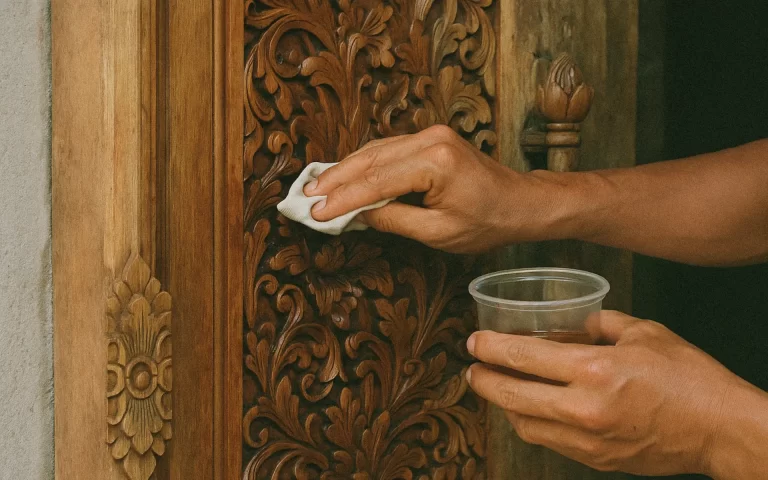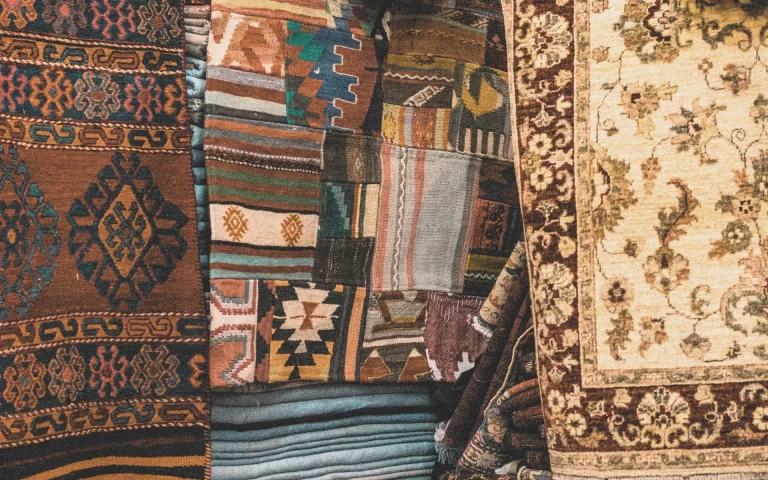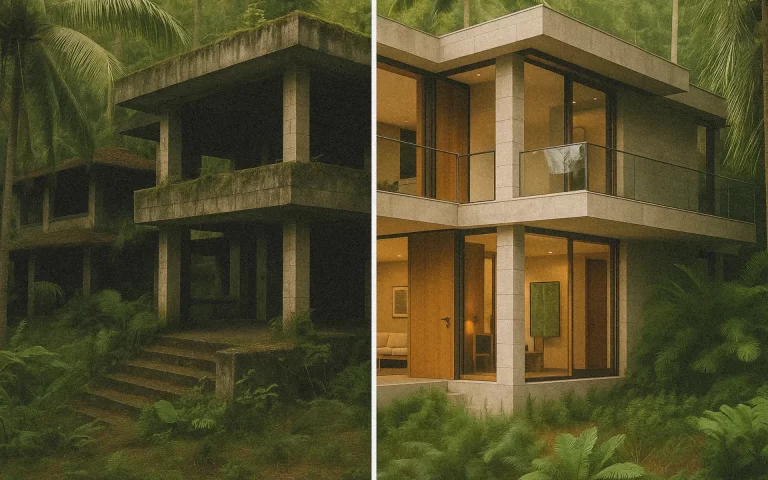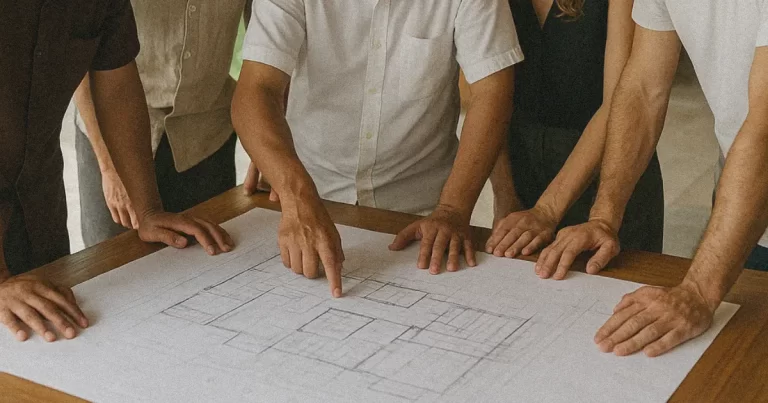Heads up: We’re not your lawyers, agents, or tax pros.
Before diving into any real estate play in Bali, it’s smart to speak with the pros—think local legal advisors, property consultants, and agencies like Harcourts or Emerhub. This guide shares insights and inspiration, but it’s not a substitute for personalized, professional advice.
Smart Strategies for ROI & Resale (That Don’t Trash the Island)
Refreshing a villa in Bali isn’t about cheap tile and a fast markup. The market is nuanced, competitive, and culturally sensitive. Done right, it can save existing structures from demolition, reduce resource use, and breathe new life into overlooked homes. Done wrong? It can fuel overdevelopment, strain local communities, or land you in legal limbo.
Why renovation for resale can be a good way to go:
Saves existing structures from demolition (good for the island).
Uses less resources than new builds (no fresh concrete jungles).
Revives overlooked gems (that tired villa could be a goldmine).
Here’s how to renovate responsibly—with design savvy, legal clarity, and a little humility.
1. Buy in the Right Location (It’s Everything!)
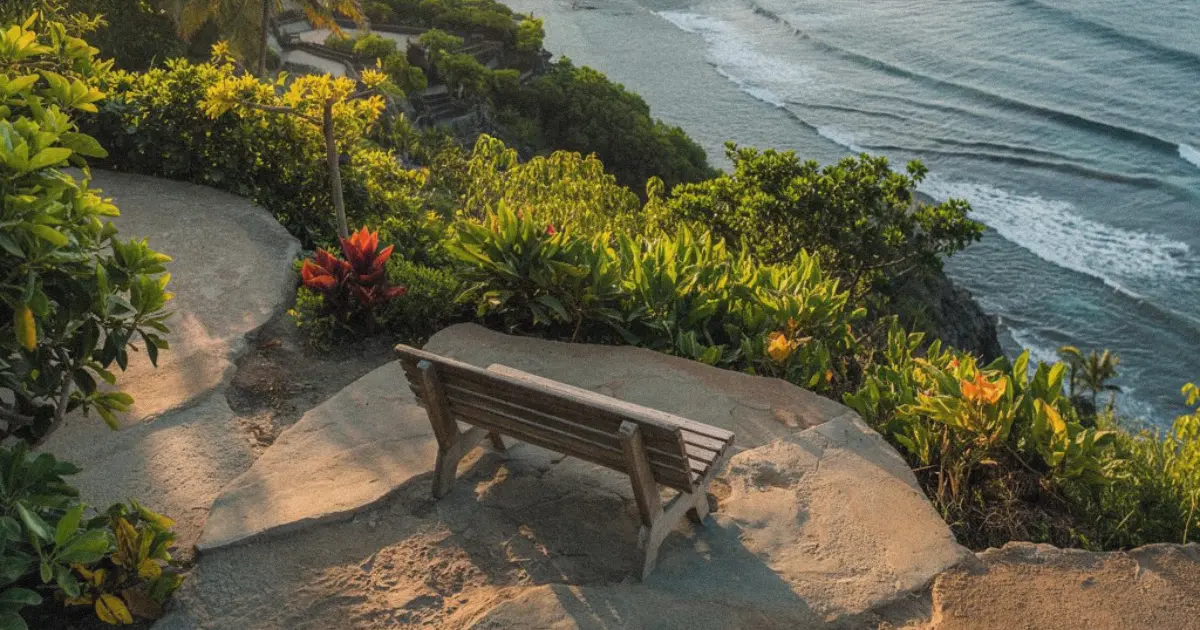
It doesn’t matter how stunning your villa is—if it’s in the wrong spot, it’s a tough resale. Prime areas appreciate faster, but overbuilt zones may face tighter scrutiny in the coming years.
Renovation-friendly zones (as of 2025):
- Canggu & Berawa – Already booming, but high-end boutique villas still fetch premium resale prices.
- Uluwatu – Ocean-view builds are booming, but be mindful of local pushback and environmental impact.
- Pererenan – Canggu’s quieter, more sophisticated neighbor. Prices are rising fast.
- Ubud – Not just for yogis anymore. Think eco-luxury retreats and wellness-focused buyers.
Tabanan: Affordable, with potential—ideal for low-impact renovations that preserve rice field views.
Areas to be cautious with:
- Sanur & Seminyak – Classic Bali spots, but oversaturated with older properties. Harder to stand out.
- North Bali (Lovina, etc.) – Stunning but slow-moving. Not ideal for short-term turnover.
Bukit Peninsula cliffs: High visual impact zones with fragile land and construction controversy. Tread carefully.
2. Leasehold Still Leads—but Freehold Isn’t Off the Table
For most foreigners, leasehold remains the most straightforward path to owning property in Indonesia. It’s cleaner, simpler, and doesn’t require jumping through as many legal or bureaucratic hoops. But if you’re buying through a PMA (foreign-owned company), freehold may still be a viable option—especially if you’re playing the long game and want full control.
Why Leasehold Still Has the Edge (for Now):
Fewer legal complexities — available directly to foreign individuals
Lower upfront costs — ideal for those renovating, renting out, or planning to resell
Lower environmental impact — repurposing existing builds instead of new construction
Appealing to turnkey buyers — especially other expats looking for ready-made homes
But There Are Caveats:
Lease value declines over time (and faster than you’d think)
Properties with under 20 years left can be harder to resell or refinance
Renewal terms aren’t always rock-solid—clarify them upfront
What About Freehold?
While foreigners still can’t own freehold land in their personal name, the law does allow freehold ownership through a PT PMA (foreign-owned company)—as long as the property aligns with the company’s business activities and gets proper BKPM approval. It’s not a loophole—it’s a legal structure, and one that makes sense for buyers who plan to live, work, or run a business here long-term.
That said, nominee arrangements (using an Indonesian citizen’s name to hold the land) are risky—legally, financially, and ethically.
The Takeaway:
Leasehold is still the most accessible and flexible option for individual expat buyers. But for entrepreneurs or long-term residents with the right setup, freehold through a company is a real—and regulated—possibility. As always, get professional legal advice before signing anything in Bali.
3. Renovate Wisely (Don’t Overdo It!)
Not every upgrade adds value. The key is spending where it matters while avoiding unnecessary luxury touches that won’t boost ROI.
High-Value Upgrades:
- Outdoor spaces: Pools, sunken lounges, and lush gardens make villas feel bigger & more luxurious.
- Kitchen & bathrooms: Buyers expect sleek, modern finishes (think polished concrete, natural stone).
- Lighting & airflow: Big windows, high ceilings, and smart lighting make a space feel high-end.
- Sustainability touches: Solar panels, rainwater collection, and eco-materials sell well to premium buyers.
- Reclaimed materials: Teak from old joglo huts, recycled bricks, etc.
- Efficient layouts: Open-air designs that cut AC dependence.
What NOT to Waste Money On:
- Ultra-luxury fittings – Fancy imported marble? Buyers in Bali love local materials like teak & terrazzo.
- Over-personalized design – Keep it neutral. Statement walls & quirky layouts = harder resale.
- Massive enclosed spaces – Bali buyers love open-plan living. Don’t make it feel like a box.
- Virgin materials (imported marble = carbon footprint nightmare)
4. The Power of Staging & Marketing
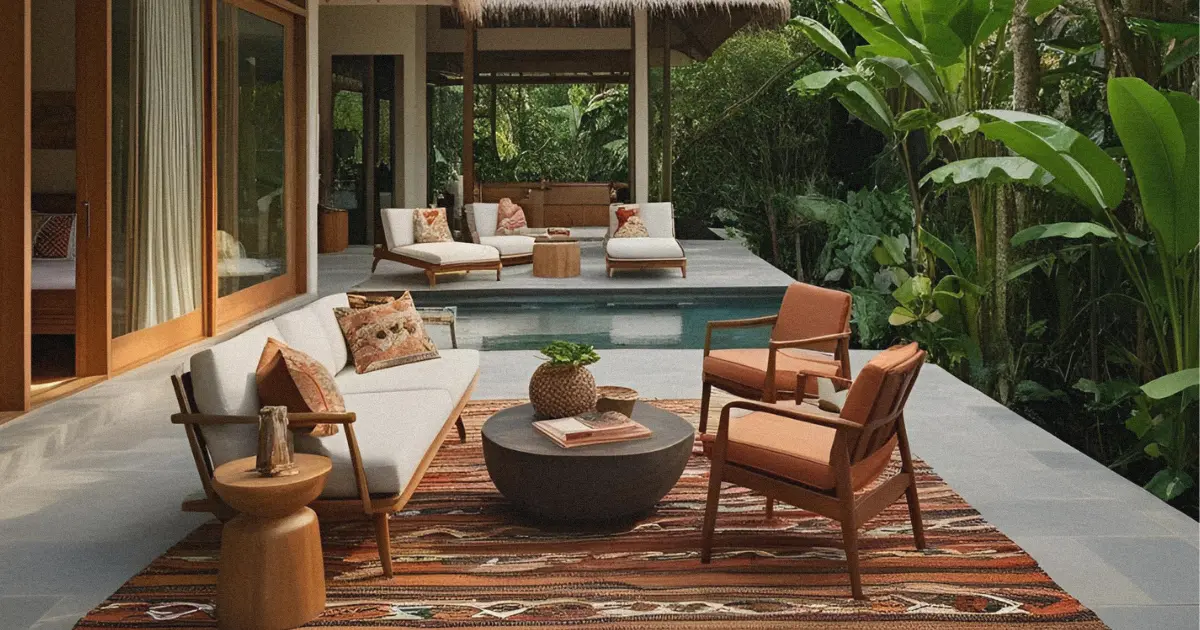
A beautifully staged villa sells faster and for more. Bali buyers are visual, emotional, and driven by Instagram aesthetics—so make sure your listing looks like a dream.
Pro Photography & Video:
- High-quality, daylight shots that showcase space and natural light.
- Drone footage for that Bali wow factor.
- Video tours (the market is shifting towards video-first marketing).
Listing Strategy:
- Use high-end platforms or direct-to-buyer networks.
- Consider Airbnb for short-term cash flow while waiting for the right buyer.
- If marketing internationally, target buyers in Singapore, Australia, and Hong Kong (they’re buying!).
- Highlight sustainability: Buyers pay more for solar panels and rainwater systems.
5. Pricing It Right for a Quick Sale
Price too high? Your villa sits. Price too low? You leave money on the table.
- Analyze recent sales in your area (not just listing prices—see what actually sold).
- List slightly above your target price to leave negotiation room.
- Offer a “turnkey” package (furniture, management setup) for foreign buyers who want zero hassle.
Pro Tip: The sweet spot when you’re renovating for resale in Bali? Luxury mid-range properties (4-12 billion IDR range). This is where demand is strongest, and buyers are looking for turnkey investments.
Final Thoughts: Is Renovating in Bali Worth It?
Done right, a smart property revamp can be a win-win: for the buyer, the island, and your bottom line. But this isn’t a free-for-all. Respect for local laws, landscapes, and cultural rhythms should come before profit margins.
A responsible renovation strategy saves more than it spends—and leaves Bali better than it found it.

